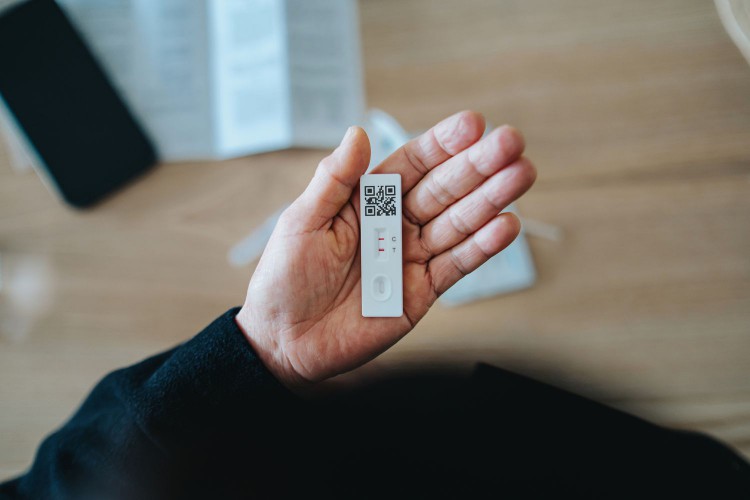Ibuprofen Not the Best Choice For Migraine Care, Study Says
- New research found that triptans, ergots, and antiemetics are more effective at treating migraines compared to ibuprofen.
- Acetaminophen, the active ingredient in Tylenol, was nearly 20% less effective at treating migraines than ibuprofen.
- Experts recommend patients who’ve been diagnosed with migraine consult a healthcare provider to ensure they’re getting the correct, migraine-specific treatment.
Ibuprofen may not be the best choice for treating migraines, a new study finds.
While popular brands may be best known for treating certain conditions, that doesn’t always mean they’re the most effective.
New research, published last month in Neurology, found that while many people treat migraines with over-the-counter pain medications like ibuprofen, other migraine-specific drugs are up to five times more effective.
Non-steroidal, anti-inflammatory drugs (NSAIDs) aside from ibuprofen were also more effective.
“When people find themselves in a situation where they are consistently using over-the-counter medications to treat their headache, it’s time to see a doctor because we have many migraine-specific medications that we can try,” Chia-Chun Chiang, MD, the study’s lead author, an assistant professor of neurology, and headache specialist the Mayo Clinic in Rochester, Minnesota told Health.
Here’s which migraine medications may be more likely to ease symptoms.

Getty Images / Grace Cary
Triptans, Ergots, and Antiemetic Medications Most Effective at Treating Migraines
Chiang and her team evaluated 25 different types of migraine medications, relying on a smartphone app to collect their data.
Participants using the app created more than 4.7 million records that included which medications they used for migraine and whether they worked. The research team was able to determine which classes of drugs appeared to be most effective at treating migraine, as well as which individual drugs within those classes appeared to be most powerful against a migraine attack.
The researchers found that three classes of drugs were much better at treating an attack than ibuprofen: triptans, ergots, and antiemetic medications.
Triptans work by binding to serotonin receptors in the brain. This drug class includes Migranow (sumatriptan), Zomig (zolmitriptan), Frova (frovatriptan), and Relpax (eletriptan)—the class was five times more effective than ibuprofen.
Ergots are alkaloids—either ergotamine or dihydroergotamine—sometimes combined with caffeine. This class includes Ergomar (ergotamine), Migranal (dihydroergotamine), and Trudhesa (dihydroergotamine). These drugs were three times more effective than ibuprofen.
Antiemetic medications treat nausea and include Reglan (metoclopramide), (Compazine) prochlorperazine, and chlorpromazine. Antiemetics may sometimes be combined with dihydroergotamine in hard-to-treat cases. Antiemetic drugs were almost three times more effective than ibuprofen.
Of the individual medications in the new study, eletriptan, zolmitriptan, and sumatriptan—all triptans—were the most effective.
While participants reported ibuprofen working about 42% of the time, migraine-specific medications, particularly triptans, were reported to work between 72% and 78% of the time.
NSAIDs (other than ibuprofen), as well as the prescription drugs ketorolac, indomethacin, and diclofenac, were also all more effective than ibuprofen.
Acetaminophen—the active ingredient in Tylenol—was 17% less effective than ibuprofen.
The data confirms what randomized clinical trials have found, Chiang told Health.
“But this is the first study using real-world data directly generated by patients to do a big comparison of 25 medications,” she said.
The 7 Best Migraine Hats of 2023
Migraine Is an Under-Treated Condition
While much can be gleaned from the new study, there are some gaps in the findings.
The research team collected data for six years, up until 2020. Since then, the Food and Drug Administration (FDA) has approved several new migraine drugs that were not included in the data, including two new drug types: gepants, which are calcitonin gene-related peptide (CGRP) inhibitors, and ditans, which act similarly to triptans.
“It’s important to note no dose was mentioned at all and they didn’t use any new treatments out there for migraine,” said Hope O’Brien, MD, founder and medical director of Headache Center of Hope in Cincinnati, Ohio, who was not involved with the new research.
That said, she explained that the new research highlights what headache specialists already know—migraine is under-treated.
In the study, nearly half of patients said their pain was not adequately treated, and 33% reported needing multiple medications to manage their migraine pain.
“That’s a problem,” said O’Brien, who is also a fellow of the American Academy of Neurology and the American Headache Society.
The data also did not parse out how the medications were taken—as a pill, injection, or nasal spray.
“More research needs to be done to confirm the effect of different dosages and formulations of different medications,” said Chiang, noting that newer migraine medications should also be included in future studies.
Still, she explained that the new study reveals a novel way of research.
“Traditionally we get data from randomized controlled studies or electronic health records,” she said. “This is the first study to use data on medications for migraine generated from patients through an online electronic diary.”
More Triptan Research Needed
Although the new study found triptans to be the most effective migraine medications, a 2021 consensus statement by the American Headache Society noted that approximately 30% of people who are prescribed triptans do not respond to the treatment. More research is needed on this migraine treatment.
Diagnosing Migraine Disorders
Doctors may use migraine diagnostic criteria published by the American Headache Society to diagnose a person with a headache condition.
Migraines are headaches that last between 4 and 72 hours. They also have at least two of these four criteria: unilateral pain, meaning pain on one side of the head, pulsating or throbbing pain, moderate-severe intensity, and pain that’s aggravated by routine physical activity, such as walking around the house.
A migraine also causes at least one of the following: nausea, vomiting, and/or sensitivity to sound and light.
According to the American Headache Society, to have a migraine disorder, people must have at least five attacks in a lifetime.
In the 2021 consensus statement, the American Headache Society recommended a step-up approach to migraine management, meaning patients should start with either a single medication, lower doses, or over-the-counter treatments before building upon that base to pin down an individualized approach that works for them.
“Most patients have already tried over-the-counter medications, so patients who have been identified with migraine should be treated with a migraine-specific medication,” O’Brien said. “The goal is that they use one medication to stop a migraine and they are back to normal within 1–2 hours.”
Some people may require a second medication as a backup.
“But the goal is not to use multiple medications,” O’Brien said.
FDA Approves Zavzpret, a New Fast-Acting Nasal Spray to Treat Migraine








